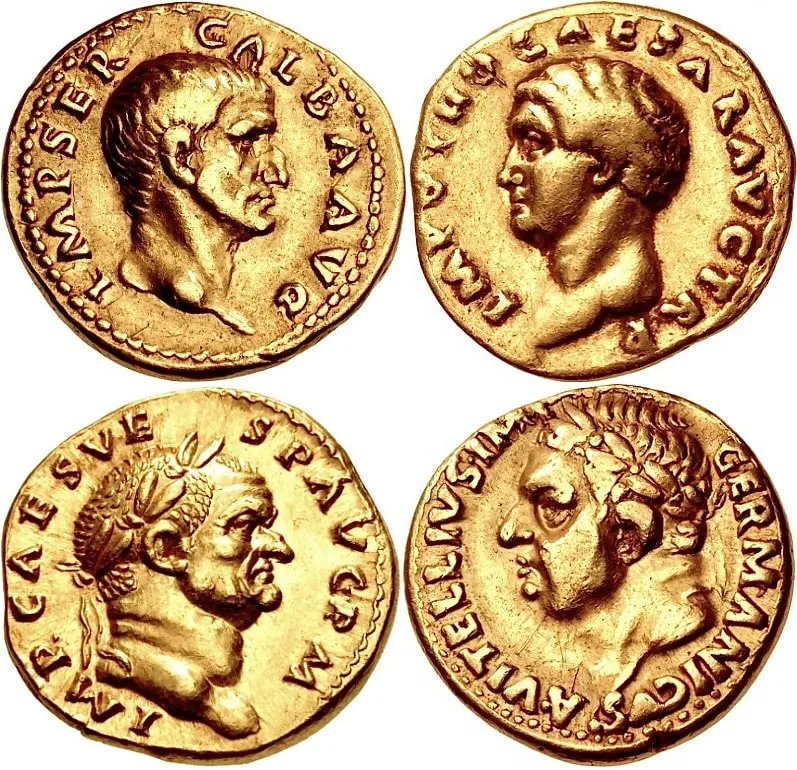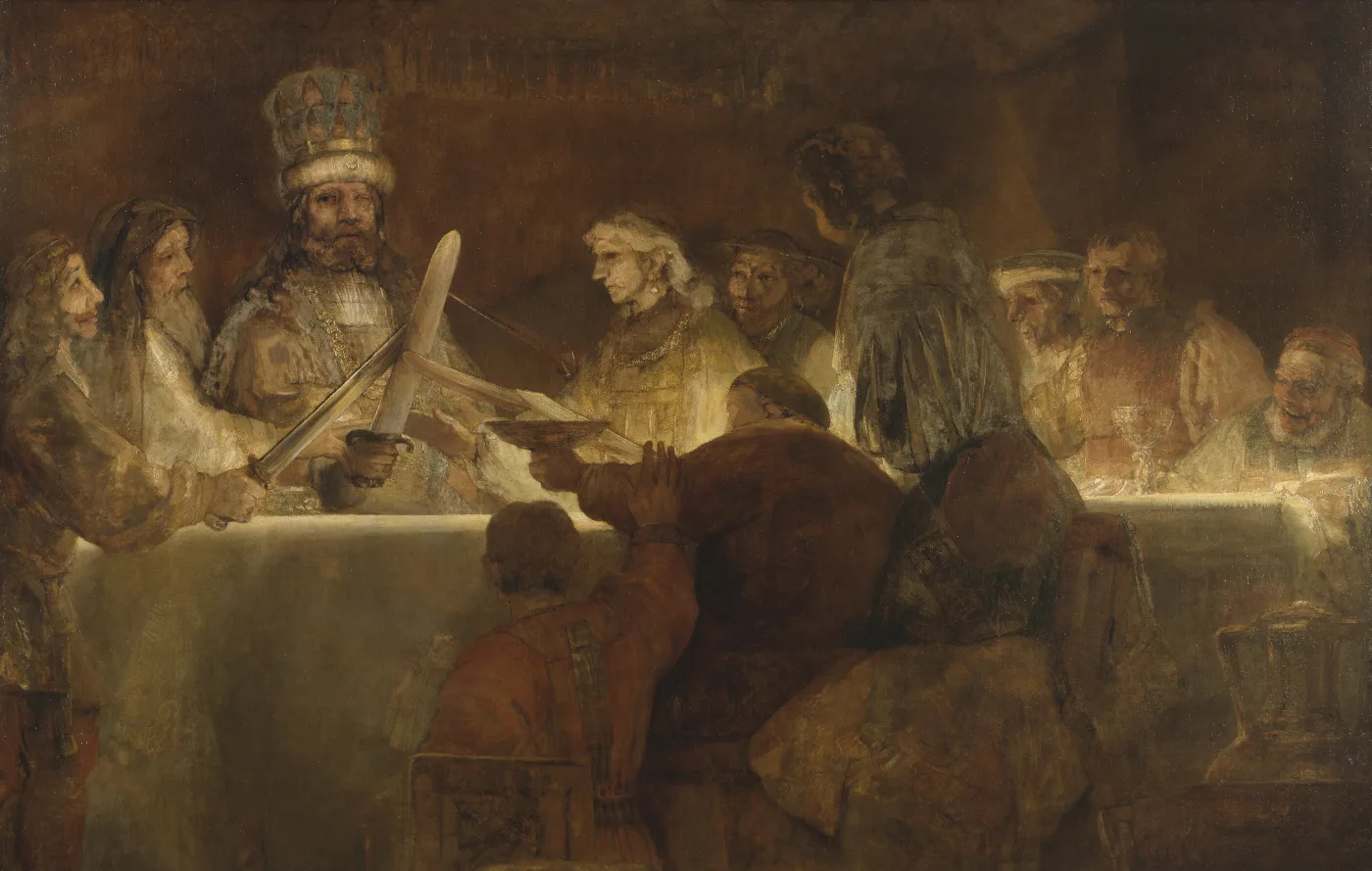Have you ever wondered what it was like to live through the chaos of ancient Rome’s most turbulent year? In AD 69, the Roman Empire experienced the “Year of the Four Emperors,” a time of rapid leadership changes and political upheaval. At the same time, the Batavians, a Germanic tribe, saw an opportunity to revolt against Roman rule.
This article explores these events from both the Roman and Batavian perspectives, revealing how internal strife and external rebellion intertwined. What if the Batavians had succeeded? Let’s dive in 😉 !
Roman Perspective on Internal Strife and External Rebellion
In the annals of Roman history, few years stand out as dramatically as AD 69, often referred to as the “Year of the Four Emperors.” This tumultuous period, marked by rapid successions of leadership and political upheaval, was paralleled by the Batavian Revolt, a significant external rebellion that further tested the empire’s resilience. From the Roman perspective, this was a time of both internal strife and the pressing need to suppress external rebellion. Let’s journey through this reimagined historical landscape, understanding the gravity of such a significant shift.
The Setting Sun of the Julio-Claudian Dynasty
The Julio-Claudian dynasty, which had held the reins of the Roman Empire for nearly a century, came to a dramatic end with the suicide of Emperor Nero in AD 68. His death left a power vacuum, and what followed was a series of rapid successions as various leaders vied for the coveted title of Emperor. This was not merely a game of thrones; it was a reflection of the deep-seated political, social, and economic issues that had been simmering beneath the surface of the Roman Empire.
One Year, Four Emperors
The first to ascend the throne was Servius Sulpicius Galba, a seasoned senator and governor. However, his reign was short-lived. Dissatisfaction among the legions and his perceived mismanagement led to his assassination within months. Marcus Salvius Otho, once a close ally of Nero, quickly replaced him. But Otho’s reign was even shorter. Facing opposition from Aulus Vitellius, another contender for the throne, Otho took his own life after a mere three months.
Vitellius, with the support of the legions from the western provinces, became the next emperor. But the eastern provinces rallied behind another leader, Titus Flavius Vespasian. The ensuing conflict culminated in the Battle of Cremona, leading to Vitellius’s defeat and death. By the end of AD 69, Vespasian emerged as the victor, establishing the Flavian dynasty.

The Batavian Revolt
While Rome grappled with its internal power struggles, a significant external challenge arose in the form of the Batavian Revolt. The Batavians, a Germanic tribe settled in the Roman province of Germania Inferior (modern-day Netherlands), had been loyal allies of Rome. However, mistreatment, heavy taxation, and forced conscriptions led to growing discontent.
Under the leadership of Gaius Julius Civilis, the Batavians rebelled against Roman rule. The revolt quickly gained momentum, with several neighboring tribes joining the cause. The Roman legions, already stretched thin due to the internal strife, faced a formidable challenge.
Rome’s Response
From the Roman perspective, the Batavian Revolt was more than just an external rebellion. It was a test of the empire’s resilience and its ability to maintain control over its vast territories. The revolt highlighted the challenges of managing a diverse and expansive empire, especially during times of internal instability.
Vespasian, recognizing the gravity of the situation, dispatched his best generals to suppress the revolt. After a series of battles and negotiations, the rebellion was quelled by AD 70. The Batavians were granted autonomy, and their alliance with Rome was restored, albeit with a more equitable relationship.
Conclusion
The Year of the Four Emperors and the Batavian Revolt offer invaluable insights into the challenges and complexities of leadership, governance, and empire-building. From the Roman perspective, AD 69 was a year of introspection, resilience, and adaptation.
The rapid successions of emperors underscore the importance of stable leadership and the perils of political infighting. The Batavian Revolt serves as a reminder of the need to treat allies with respect and fairness, recognizing their contributions and addressing their grievances.
Batavian Perspective on Seizing Opportunity Amidst Roman Instability
The vast expanse of the Roman Empire, with its grandeur and might, has often overshadowed the narratives of the smaller tribes and regions under its dominion. One such tribe, the Batavians, found themselves at a historical crossroads during the tumultuous Year of the Four Emperors in AD 69. From the Batavian perspective, this period was not just about Roman political instability; it was an unprecedented opportunity to challenge the Roman yoke and assert their autonomy.
Loyal Allies, Yet Restive Subjects
Nestled in the region known as Germania Inferior, the Batavians were a Germanic tribe that had long been allies of Rome. Their warriors were renowned for their skills, especially as auxiliary troops in the Roman legions. However, beneath this veneer of collaboration, there were simmering tensions. The Batavians, like many other tribes, were subjected to heavy Roman taxation, conscription, and at times, mistreatment. The pride of a warrior tribe was often at odds with the demands of an imperial power.
A Window of Opportunity
The suicide of Emperor Nero in AD 68 set off a chain reaction in the Roman political landscape. The subsequent Year of the Four Emperors saw a rapid succession of rulers – Galba, Otho, Vitellius, and finally, Vespasian. For the Batavians, this wasn’t just a distant political drama. The instability at the heart of the empire provided a potential opening to renegotiate their position.
Gaius Julius Civilis, a Batavian chieftain and a former officer in the Roman army, became the torchbearer of this sentiment. He recognized that the Roman distraction with its internal power struggles could be the opportune moment for the Batavians to rise.

The Revolt
Under Civilis’s leadership, the Batavian Revolt began in earnest. It wasn’t just a military campaign; it was a symbol of resistance against imperial oppression. The revolt quickly gained traction, with neighboring tribes joining the cause, turning it into a significant regional uprising.
From the Batavian perspective, the revolt was both an opportunity and a challenge. The opportunity lay in leveraging Roman instability. The challenge was in managing a large-scale rebellion, ensuring consistent support from other tribes, and facing the inevitable Roman counteroffensive.
The Roman Response and Batavian Resilience
As the Batavians and their allies made significant gains, the Roman Empire, despite its internal issues, could not ignore the rebellion in Germania Inferior. Vespasian, the emerging power in Rome, dispatched his best generals to quell the revolt.
The ensuing battles tested the mettle of the Batavian forces. While they had initial successes, the might of the Roman military machine, combined with its strategic prowess, began to turn the tide. Yet, the Batavians fought with a ferocity driven by the desire for autonomy and respect.

Aftermath of the Revolt
The Batavian Revolt, while ultimately suppressed by the Romans, was not in vain. The aftermath saw a renegotiation of the Batavian relationship with Rome. The tribe was granted a level of autonomy, and the alliance was restored on more equitable terms.
From the Batavian lens, the revolt was a manifestation of their resilience, pride, and the desire to be treated as equals rather than subjects. The Year of the Four Emperors provided the backdrop, but the Batavian spirit was the driving force.
Which perspective do you find more compelling: the Romans trying to maintain control or the Batavians fighting for autonomy? Share your thoughts with us!
Conclusion
The Year of the Four Emperors and the Batavian Revolt, when viewed from the Batavian perspective, is a testament to the indomitable spirit of a tribe that saw an opportunity amidst the chaos and seized it. Their story serves as a reminder that history is not just shaped by empires and emperors but also by the aspirations and valor of its lesser-known actors.
Want more of → Perspectives ←
FAQ
1. Why was there so much political instability in AD 69, known as the “Year of the Four Emperors”?
The political instability arose due to the sudden death of Emperor Nero in AD 68, which led to a scramble for power among various contenders, resulting in a chaotic year of rapid leadership changes.
2. Why did the Batavians revolt against Roman rule in AD 69?
The Batavians rebelled due to heavy taxation, forced conscriptions, and mistreatment by Roman authorities. The opportunity presented by Rome’s internal strife allowed them to assert their desire for autonomy and fair treatment.
3. How did the Roman Empire respond to the Batavian Revolt during its internal struggles?
Despite facing internal challenges, the Roman Empire mobilized its military to suppress the Batavian Revolt, showcasing its resolve to maintain control over its territories and address external threats amidst internal turmoil.
4. How did the Batavians view their rebellion in Roman history?
From the Batavian perspective, the rebellion symbolized a struggle for dignity and self-determination within the Roman Empire. It represented their quest to challenge centuries of oppression and demand recognition as equals rather than mere subjects.
This was a delight to read. You show an impressive grasp on this subject! I specialize about Appliances and you…
i think he was just a crazy guy, a victim of his childhood and enviroment
super interesting 🤔
Loved this article, learned a lot!




Leave a Reply